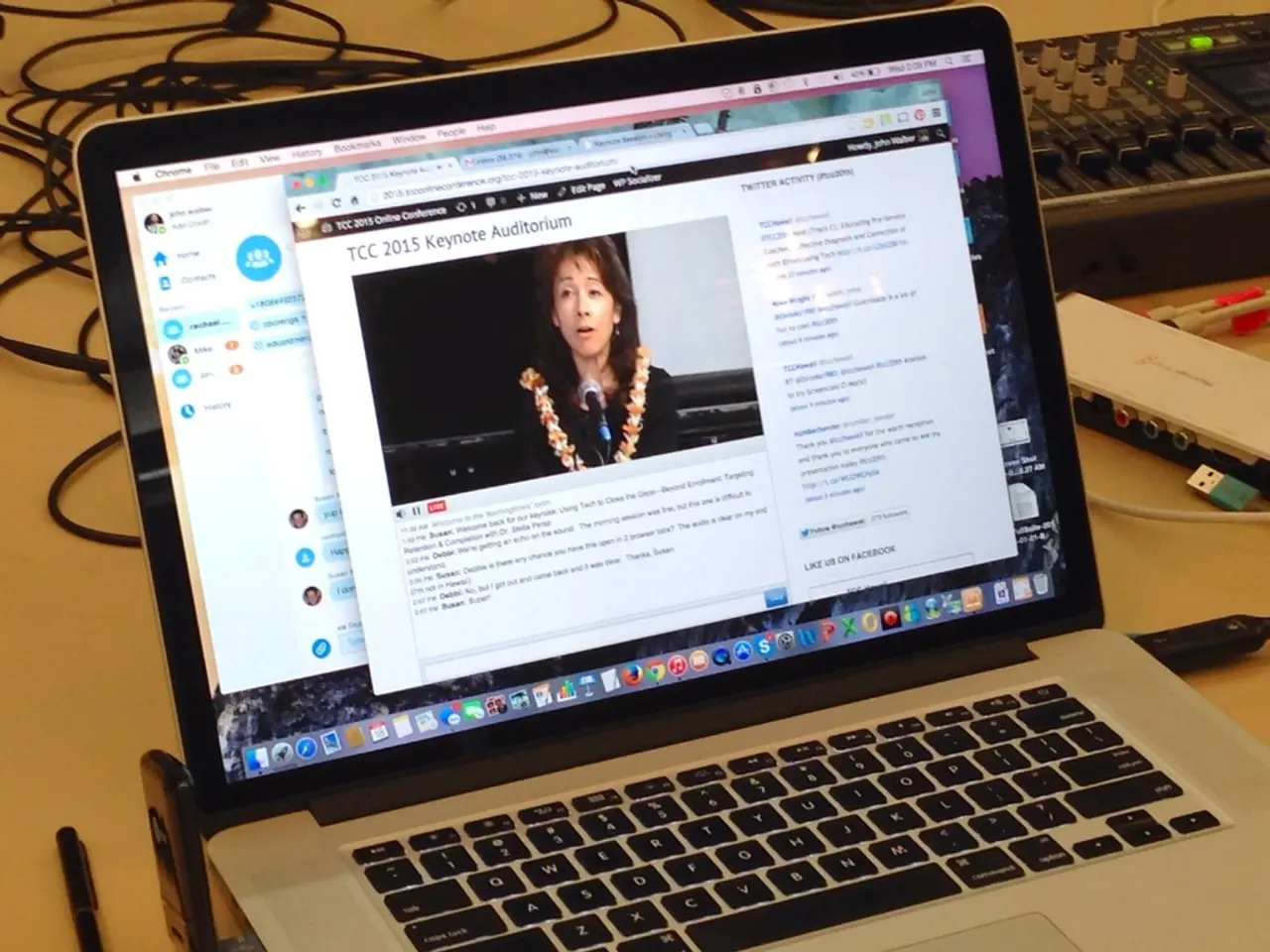Intel's Anticipated Resumption of Dividend Payments
Intel Announces Cost-Cutting Measures and Dividend Suspension
In a significant move, Intel, the world's largest chipmaker, has announced a series of changes under its new CEO, Lip-Bu Tan. The company is planning to slash costs, remove layers of middle management, and downsize its workforce, as it grapples with financial challenges [1].
The company's balance sheet has taken a beating due to heavy spending on new investments and a decline in revenue from its products business. This is evident in the total operating loss of $301 million reported for the quarter and the adjusted free-cash-flow loss of roughly $3.7 billion, as a result of pouring more than $5 billion into capital expenditures in the first quarter alone [2].
To address these issues, Intel has reduced its target for gross capital spending in 2025 by $2 billion to $18 billion. The company is also focusing on engineering and listening to its customers, with a renewed emphasis on its foundry business [1].
However, the foundry business, which generates minimal revenue from external customers, registered an operating loss of $2.3 billion and less than $1 billion in revenue in the first quarter [2]. The suspension of Intel's dividend, which was completely suspended in 2024 due to chronic struggles and weak financial performance, was coupled with significant layoffs [3].
In the data center segment, Intel has faced decreased revenue and profits due to strong products from AMD and a shift in spending toward AI accelerators. The company's products business generated an operating income of $2.9 billion on $11.7 billion in revenue in the first quarter, but this has not been enough to offset the losses in other areas [2].
As of late July 2025, Intel has not yet reintroduced its dividend, and there is no specific timeline provided for when the dividend might return. The company is currently investing in new manufacturing facilities and process technologies to regain its manufacturing advantage, and analysts and investors remain cautious due to near-term earnings pressure and competitive challenges [1][3].
In addition to these changes, Intel is spinning off and selling off non-core businesses, including the recent sale of a majority stake in Altera. The company's debt load has been climbing for the past 15 years, rising from next to nothing in 2010 to nearly $50 billion today [4].
Investors should monitor Intel’s future earnings releases and corporate announcements for any updates on dividends. For now, the return of the dividend remains uncertain.
References:
[1] CNET. (2025, July 22). Intel's new CEO Lip-Bu Tan is slashing costs, cutting jobs and selling off businesses. [Online]. Available: https://www.cnet.com/tech/intel-ceo-lip-bu-tan-slashing-costs-cutting-jobs-and-selling-off-businesses/
[2] Reuters. (2025, April 21). Intel posts quarterly loss, reaffirms cost-cutting plans. [Online]. Available: https://www.reuters.com/business/technology/intel-posts-quarterly-loss-reaffirms-cost-cutting-plans-2025-04-21/
[3] Bloomberg. (2025, July 23). Intel's Dividend Is Likely Years Away From Returning, Analysts Say. [Online]. Available: https://www.bloomberg.com/news/articles/2025-07-23/intel-s-dividend-is-likely-years-away-from-returning-analysts-say
[4] The Wall Street Journal. (2025, July 24). Intel's Debt Load Climbs Amid Restructuring Efforts. [Online]. Available: https://www.wsj.com/articles/intels-debt-load-climbs-amid-restructuring-efforts-11630185600
Intel, in the face of financial challenges and high spending on new investments, has suspended its dividend and is focusing on cost-cutting measures, such as layoffs and the sale of non-core businesses. The company is also investing in new manufacturing facilities to regain its competitive edge in the business sector. Amidst these changes, Intel's debt load, which has been climbing for the past 15 years, is nearing $50 billion today. As a result, investors should closely monitor Intel's future announcements and earnings releases for updates on the potential return of the dividend.




